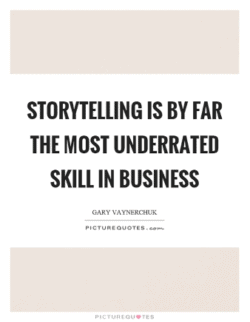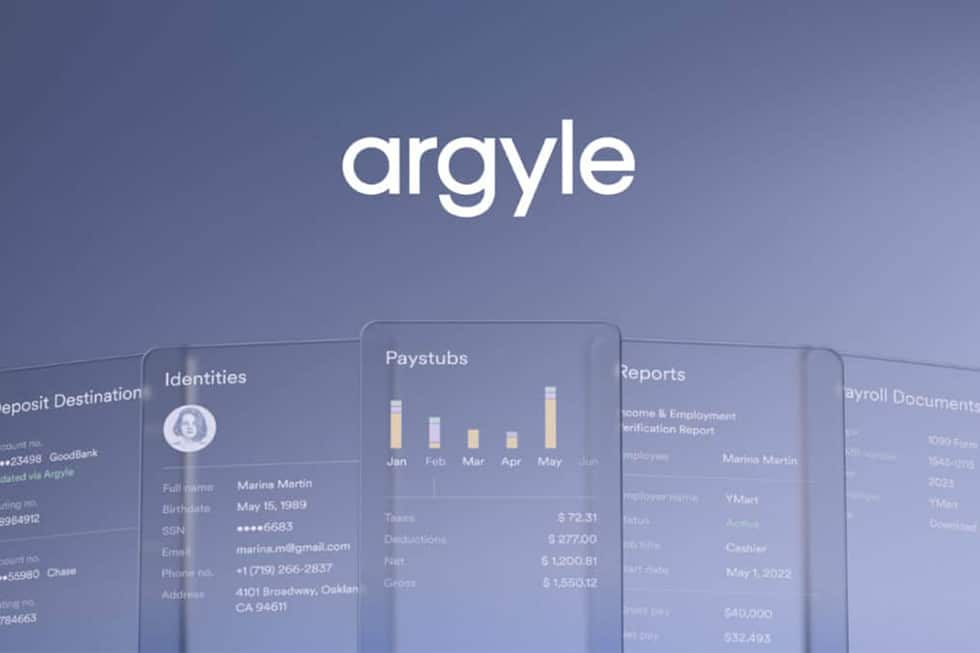Everybody loves great storytelling.
Robert McKee wrote that “leaders use story to author the future.” Being able to tell an effective story is much more memorable than rattling off revenue figures, future sales, growth, etc. Storytelling deconstructed helps to transform an idea into a powerful story. It’s also a skill that can pivot between our personal and professional lives. Ultimately, the main goal of storytelling is to make you (and your company’s marketing) personal and memorable.
Take Michael Dell, for example – he’s always been fascinated with computers, got his first computer at age 15 and immediately took it apart to see how all the different components worked together. He continued that passion as he sold computers, upgraded students from dorm rooms and dropped out of college to form one of the largest companies in the world. That is a very, very powerful story and Michael Dell has told this narrative consistently throughout the years to propel the Dell brand and establish them as a pioneer in that space that continues to thrive to this day.
When it comes to your own brand and marketing, think about storytelling from the perspective of what it took for your brand to evolve to where it is now. Tell the story behind how the company started, how you decided to thrive, and what got you to that next milestone. The narrative behind how those stats piled-up or how those milestones were reached is much more interesting and memorable with audiences than seeing a graph on a chart.
Where should you use storytelling?
There are many venues where storytelling can live. Having a prominent “about us” page on a company website is a great start and should effectively convey the history of how it was formed and grown throughout the years. An effective “about us” page provides the opportunity to plant a seed in your audience’s mind for the first story that can then branch off from your website. From there, the storytelling toolset can be further leveraged by layering in a corporate blog, company videos and social media content to amplify the message.

Photo Credit: picturequotes.com
Case studies can also be effective storytelling tools because they allow a third party, whether it’s a customer, a consultant, or somebody that’s working with your brand, to do the storytelling for you and validate your message.
The science behind storytelling
For any communicator that remembers college courses on persuasion, your ethos (i.e.credibility, background, resume and logos) accounts for only 10% of the persuasive argument.
While the data is important, part of a great brand story also weaves in the pathos to build an emotional connection. This path is often hard for storytellers to understand and build into the company’s narrative because the data is much more tangible and we’re used to leading with our credibility and expertise on a topic. New product entrants can exceptionally benefit from leveraging storytelling tactics, particularly in an industry where a story can help cut through the reams of data and statistics.
In a business setting, we ultimately underestimate the power of belonging to a group. Google provides a perfect example of this when it established a mantra in its early days that “evil doesn’t belong here.” This mantra lent a passageway for people to connect with the company on a deep and emotional level as well as differentiate them from a few competitors along the way.
When crafting your company’s story, it’s important to not underestimate the power of connecting your business to your personal life and how things like your pets, family, maybe your own health journey can be integrated to support your pathos. This becomes increasingly important for founders and company spokespeople.
Follow this simple framework to connect to your audience and craft your company’s narrative:
- Character – as noted above, connect your character and put yourself in the story.
- Conflict – there has to be some kind of a conflict within a story. It could be as simple as “consumers don’t save enough for retirement” or “We make search easy and simple.”
- Spark – what was it that convinced you this was a great solution to the problem at hand?
- Change in Character – after the initial spark, what actions were taken to initiate change?
- Takeaway Message – this is your opportunity to weave in the rationale and summarize your key argument
Once you have formulated a sound story, have some fun with it and test out your story’s promise. Here are a few simple questions to ask:
Is your story…
- Simple and easy to understand?
- Emotional and thought provoking?
- Based upon first-hand experiences?
- Capturing the audience’s attention?
- Memorable and sticky?
The best part of storytelling is the crossover into your personal life. Go ahead and bounce your story off of friends and family. What was their reaction? Tell us your best example of when you translated an idea into words and a great story. Tweet us @kcdpr and #storytime.





